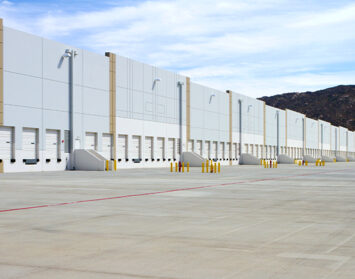When it comes to the commercial real estate market, uncertainty is mounting. Looking out across Elliott Bay to Seattle’s skyline with its iconic Space Needle, or flying in for a landing over San Francisco’s office towers, anywhere from a third to half of the offices are vacant.
The push to remote or hybrid work is digging in its heels, and interest rates are rising. There’s fear of a coming recession, fueled in part by the looming $1.5 trillion in commercial real estate mortgages which are coming due in the next two years. The vast majority of these are held by smaller lenders. And those lenders are nervous.
Dan Tarullo, a Harvard law professor and former top official at the Federal Reserve called it “a train wreck waiting to happen.” He added: “All you have to do is walk through the downtown of a major American city.”
But all that uncertainty—and available space—has made landlords eager to secure tenants—and to offer once-in-a-lifetime incentives.
Owen Rice, Executive Vice President of Hughes Marino, who is based in Seattle, says that unlike 2008-2009 when lenders were willing to “extend and pretend,” refinancing mortgages for lenders while hoping for an economic turnaround that did indeed come, the post-COVID world does not look like it will simply return to business as usual. “Right now, interest rates are much higher than they were in 2008-2009, unemployment is historically low, and now there’s hybrid work,” Rice says. “What gives lenders hope that landlords will be able to pay?”
If there was promise of an imminent turnaround to come, lenders would hold out for higher rates. Instead, they are facing ongoing uncertainty, including buildings going into default or selling at a massive discount, as well as an approach to work that has fundamentally shifted, and they are eager to shore up their uncertainty. That’s leading them to make historic deals with new and existing tenants.
A recent story in Seattle Times noted that a number of new tenants are moving into downtown retail spaces to take advantage of deals that include months of free rent and “percentage” agreements in which a tenant’s rent is tied to the business’ monthly revenue.
One business owner noted that he was able to secure a lease downtown for 25% less than a similar sized space in Seattle’s Georgetown neighborhood. He knew it was a once-in-a-lifetime deal.
“For companies with a clear line of sight on their needs for the next 3-10 years, there’s tremendous opportunity,” Rice says. In exchange for renewing leases, tenants can seek money back for a reduced footprint, significantly lower rent, highly favorable terms, and cash inducements to redesign the space. As an added bonus, he says, companies can use this opportunity to create a truly state-of-the-art, welcoming office environment that will actually incentivize employees to want to return to the office.
While real estate investment teams like SteelWave, which operates across the Western U.S., are raising hundreds of millions to buy distressed office properties—they know that to make these offices appealing, landlords have to transform them, modernize them. They need a vision.
“You have to have owners who want to create cool work environments to attract people back into the city,” Barry DiRaimondo, chief of SteelWave, told MarketWatch.
Currently, some 27% of U.S. employees work remotely full-time, and 66% of employees work remotely part time. By 2025, it’s expected that 36.2 million American employees will be working remotely. And surveys find that a good portion of American workers want to work remotely. It will take meaningful incentives to lure them back into the office.
The newly imagined U.S. workplace is no longer just about desks, cubicles and a coffee machine. To attract employees back, companies have to offer amenities that make employees feel valued, provide on-site experiences and contribute to a positive culture. These include walking paths, pop-up vendors, on-site fitness areas, free meals, child care, and a library or quiet space.
“Instead of focusing on the logistics of getting people back into the office, I encourage leaders to see this moment as an opportunity to ask employees, ‘what do you want work to look like in the future so that you can do your best work and take care of yourself?’” said Dr. Reetu Sandhu, Director of the Limeade Institute, in a 2021 global report on returning to work, “and then really listen and act accordingly. The outcome would be profound, both for people and for businesses.”
Now that many people have adjusted to remote or hybrid work, they’re not interested in returning to drab offices that lack comforts or amenities. “If you’re going to get people back, it’s got to be better than home,” Rice says.
Under the current market conditions—particularly in hard-hit tech centers like Seattle and San Francisco—commercial tenants can demand 7-10 year terms for historically low rates and redesign their spaces so employees are excited to go back to the office. In turn, says Rice, companies will reap the benefit of a stronger, collaborative culture and increased employee satisfaction. “It’s a tremendous time to be a tenant,” he says.









